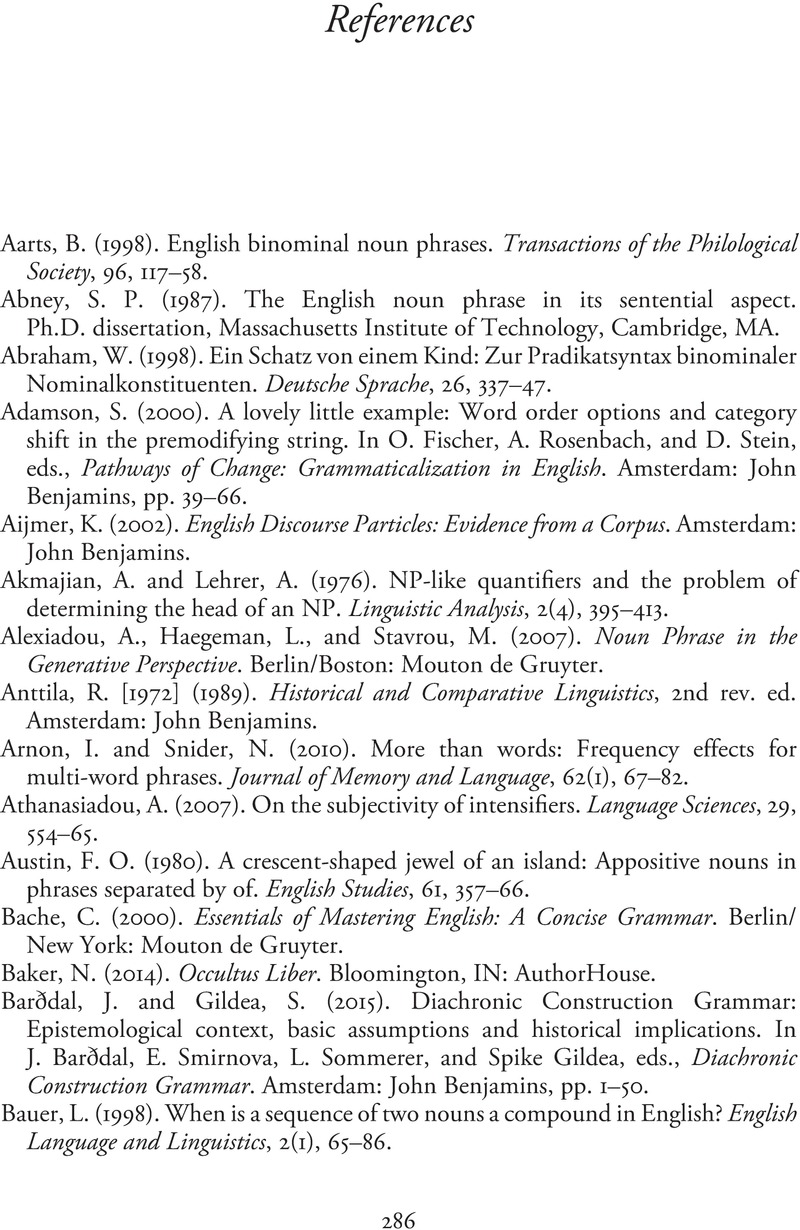Book contents
- The English Binominal Noun Phrase
- Studies in English Language
- The English Binominal Noun Phrase
- Copyright page
- Dedication
- Contents
- Figures
- Tables
- Acknowledgments
- Abbreviations
- Chapter 1 Introduction
- Part I Categorization
- Part II Testing the Hypothesis
- Part III Theoretical Analysis
- Part IV Discussion
- References
- Index
- References
References
Published online by Cambridge University Press: 29 June 2023
- The English Binominal Noun Phrase
- Studies in English Language
- The English Binominal Noun Phrase
- Copyright page
- Dedication
- Contents
- Figures
- Tables
- Acknowledgments
- Abbreviations
- Chapter 1 Introduction
- Part I Categorization
- Part II Testing the Hypothesis
- Part III Theoretical Analysis
- Part IV Discussion
- References
- Index
- References
Summary

- Type
- Chapter
- Information
- The English Binominal Noun PhraseA Cognitive-Functional Approach, pp. 286 - 305Publisher: Cambridge University PressPrint publication year: 2023

